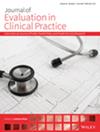Quality Indicators for the Pharmacological Management of Chronic Non-Cancer Pain in Older Adult Patients: An Integrative Review
Abstract
Rationale
Chronic non-cancer pain (CNCP) affects 28%–88% of older adults. They also experience more medication-related problems and are more likely to receive insufficient pain therapy, impacting their quality of care. Quality indicators (QIs) can be used to assess and improve the quality of their care.
Aims and Objectives
This integrative review aimed to consolidate the scientific evidence on existing QIs for the pharmacological care of older adult patients with CNCP.
Methods
We systematically searched Medline and Embase via Ovid, CINAHL via EBSCO, the SCOPUS databases and Google Scholar. We used backward citation searching to identify additional studies. We included studies reporting validated QIs and studies reporting quality-related factors associated with reduced medication safety caused by pain-related medication therapy. Two reviewers independently screened the titles, abstracts and full texts. One extracted and charted the data and assessed the risk of bias; the second validated this.
Results
We screened 4068 articles identified through the systematic search of databases and 2774 articles identified via citation searching. Seventy-eight articles met our inclusion criteria and were retained for analysis. We extracted 11 validated QIs and developed a further 243 based on quality criteria reported in the literature. QIs covered different levels, from pharmacotherapy in general to particular substance groups and individual active substances. The risk of bias in the included studies was judged to be very high in the majority of studies.
Conclusion
This integrative review established a scientific basis for developing QIs for the pharmacological management of older adult patients with CNCP. The high risk of bias present in the included studies, highlights the need for expert validation and input from patients. These indicators could help improve the quality of care provided to older adult patients with CNCP and help focus specific interventions on vulnerable patients.


 求助内容:
求助内容: 应助结果提醒方式:
应助结果提醒方式:


